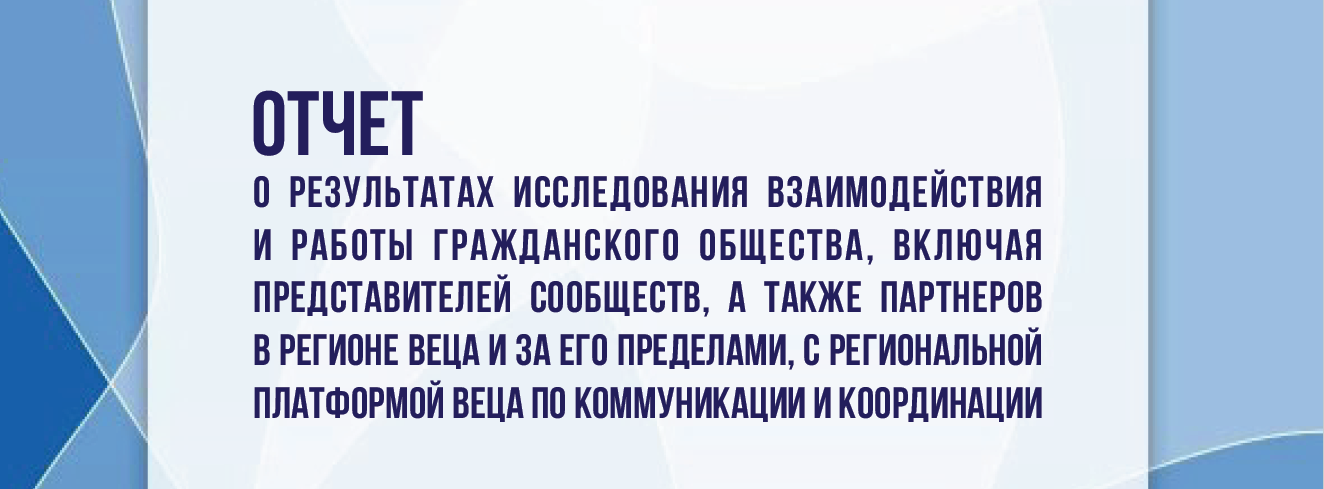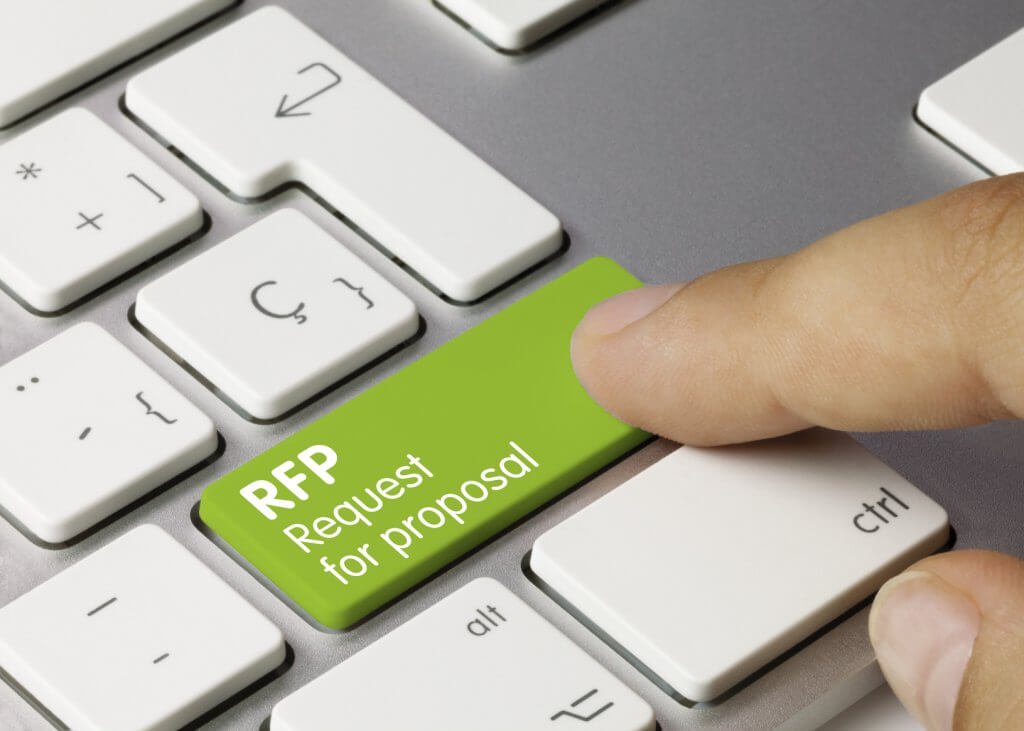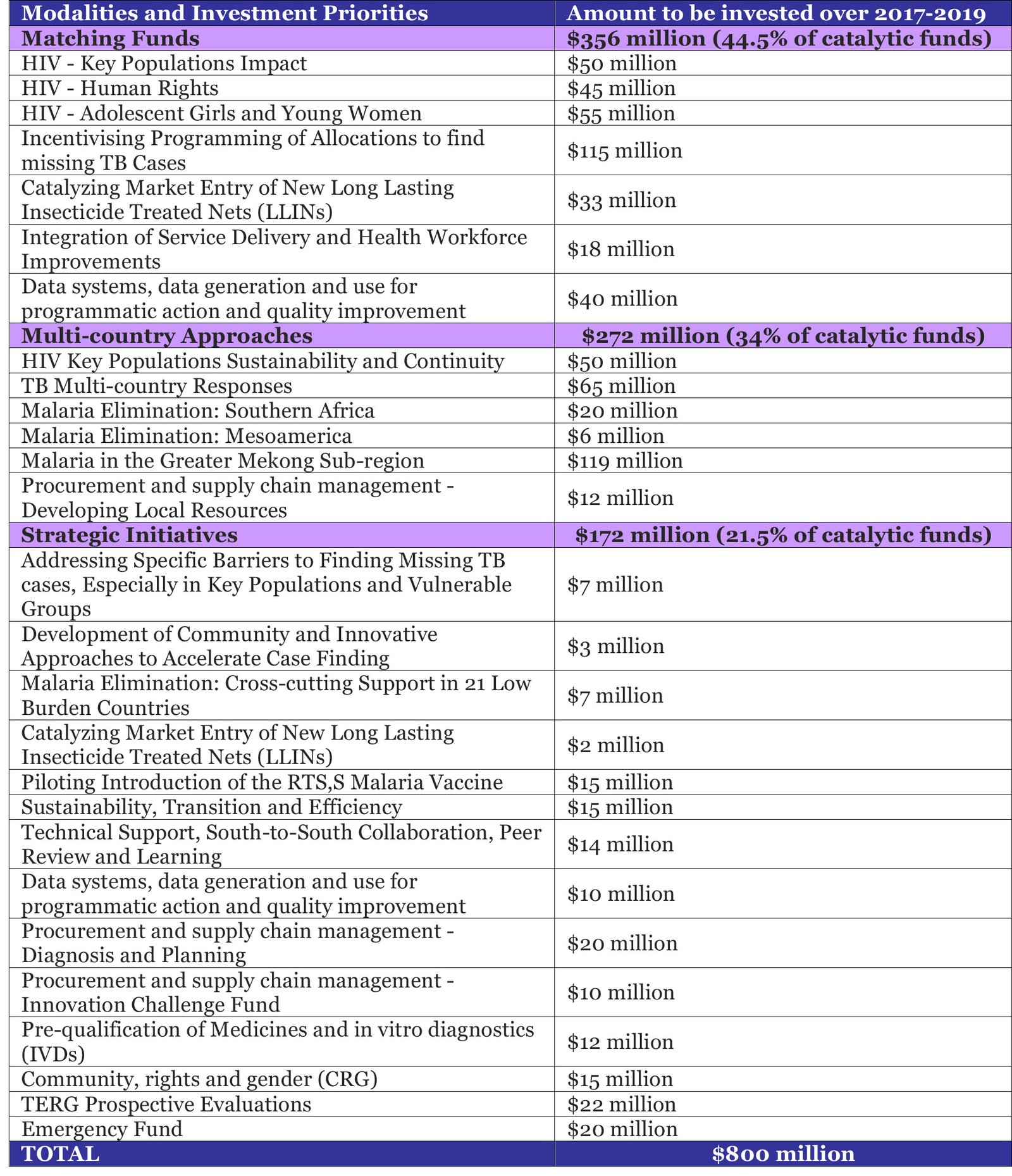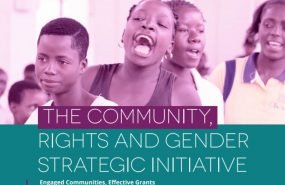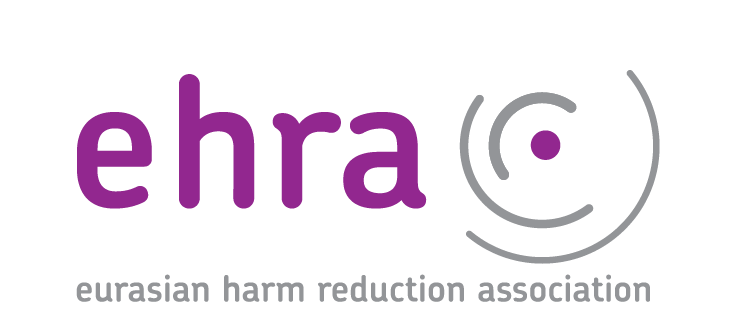Catalytic investments and the CRG SI: will the Regional Platforms still exist in 2017?
- 01.12.2016 05:54
- Post Views: 1,352
As we mentioned in our publication on the key decisions of the Global Fund’s Board 36th Meeting, the Board has approved 800 million USD for the so called catalytic investments. These investments are called catalytic because they are to catalyze the distribution of resources for countries to ensure the results meet the aims of the Global Fund Strategy for 2017-2022.
Catalytic investments will have three distinct modalities:
- Matching funds are intended to incentivize the programming of allocations towards key strategic priorities, including for key and vulnerable populations, human rights, data strengthening, among others. Matching funds will be awarded at the time of funding request review.
- Multi-country approaches will target a limited number of key, strategic multi-country priorities deemed critical to meet the aims of the Global Fund’s 2017-2022 Strategy. These approaches will include those which are unable to be addressed through country allocations alone.
- Strategic initiatives will provide limited funding for centrally managed approaches that cannot be addressed through country allocations due to their cross-cutting nature, or because they do not align neatly with grant cycles. These initiatives are deemed critical to ensure country allocations deliver against the Global Fund’s 2017-2022 Strategy.
Table: Catalytic investments for the 2017-2019 allocation period
According to the Board’s decision the more particular distribution of the catalytic funds will be determined by the GF Secretariat flexibly with consultations with the Boards and the Steering Committee.
What is different in catalytic investment priorities from the last grant cycle in 2014-2016?
- incentive funding is no longer part of the Global Fund’s grant-making architecture; matching funds will stimulate investment within country grants that are evidence-based, high-impact and which perform against the objectives in the Global Fund’s new Strategy; the Global Fund will be able to focus additional investments on innovative and impactful programming at country level with better precision.
- there is no longer a distinction between regional grants (a grant with a value-add from taking a regional approach) and multi-country grants (one that brings together several small island economies and/or other small countries that would typically not apply individually due to inherent administrative inefficiencies); now, they are all called multi-country approaches.
- priorities for multi-country approaches are now pre-defined by the Global Fund
What’s different for special or shall we now say strategic initiatives?
- what was called a “Special Initiative” in 2014-2016 is now a “Strategic Initiative” for 2017-2019
- while there were 6 Special Initiatives in the 2014-2016 period, there are 14 Strategic Initiative for the coming grant cycle
- the Community, Rights and Gender (CRG) Strategic Initiative has been approved for $15 million, the same level of investment as the 2014-2016 CRG Special Initiative.
- the value for money and sustainability special initiative, which received $9 million over the 2014-2016 period, no longer exists. Instead, there will be a new Sustainability, Transition and Efficiency Strategic Initiative, receiving $15 million
- there is significantly more money to back these Strategic Initiatives. $172 million has been allocated for Strategic Initiatives in 2017-2019, compared to $100 million for Special Initiatives in 2014-2016.
The anticipated impact for the CRG Strategic Initiative from 2017-2019 will be to:
- Strengthen the meaningful engagement of community and civil society in Global Fund processes across all stages in the grant cycle.
- Better reflect civil society and community priorities in concept notes, transition planning and related national strategies.
- Provide greater emphasis on evidence-informed and rights-based programming demonstrated in Global Fund grants.
- Identify the critical technical assistance needs of community and civil society key stakeholders.
- Strengthen community and civil society’s capacity to design and deliver quality technical support.
The CRG Strategic Initiative for 2017-2019 will have the same three components as the 2014-2016 CRG Special Initiative: technical assistance (TA) programs, capacity-building of key population networks on Global Fund processes, and regional civil society and community communication and coordination platforms. It is not yet known if the same technical assistance providers, regional platform hosts and key populations networks will continue on as partners for the new CRG Strategic Initiative.
Table: Components and levels of investment for CRG Special Initiative (2014-2016) and CRG Strategic Initiative (2017-2019)

See our article on the 2014-2016 CRG Special Initiative evaluation report that helped the Board to determine whether the CRG SI should be prolonged and includes some of the recommendations that are to be taken into account in the new implementation cycle.
Key changes to the CRG Special Initiative for when it becomes Strategic Initiative:
- the Global Fund aims to improve access to technical assistance; the Board paper suggests that CRG technical assistance will now be available throughout the grant cycle, whereas it was previously only available up until the grant signing stage
- the new CRG Strategic Initiative is broadening the partnership with the Robert Carr civil society Network Fund component to more effectively integrate TB and malaria community networks in addition to HIV
- stronger links between the new CRG Strategic Initiative and other Strategic Initiatives
- potential linkages between the CRG Strategic Initiative and the new $15 million Sustainability, Transition and Efficiency Strategic Initiative. The CRG Strategic Initiative will have a specific focus on contexts that are undergoing transition planning and where key and vulnerable population engagement remains particularly challenging. Similarly, the Sustainability, Transition and Efficiency Strategic Initiative includes support for civil society engagement in budget processes and domestic resource mobilization. This has also been piloted through the CRG Special Initiative technical assistance program, where $500,000 was set-aside in 2016 for sustainability and transition TA in Latin America and the Caribbean, Eastern Europe and Central Asia, South Africa and the Asia Pacific region.
The CRG Strategic Initiative will contribute important gains towards the Fund’s strategic objectives to maximize impact against the three diseases, build resilient and sustainable systems for health and promote and protect human rights and gender equality.
Based on 2 Aidspan articles.
Related News
Community, Rights and Gender Strategic Initiative Final Evaluation (2017-2019)
Global Fund presented the final report and summary slide deck of the external evaluation of the Community, Rights and Gender Strategic Initiative (CRG SI) (2017-2019). The full report is also available on the Global Fund’s website: Community, Rights and Gender Strategic Initiative 2017-2019: Independent Evaluation. Post Views: 760 Read more“The Community, Rights and Gender Strategic Initiative: Engaged Communities, Effective Grants. June 2020 Update”A new Global Fund publication
The Community, Rights and Gender Strategic Initiative (CRG SI) is a three-year $15-million catalytic investment, aimed at strengthening the meaningful engagement of civil society and communities in Global Fund-related processes. It works through three mutually reinforcing components: A short-term technical assistance program, long-term capacity strengthening of key and vulnerable population networks and organizations, and six […] Read moreMain decisions at Global Fund’s 41st Board meeting include updated allocations methodology and restricted financial contributions
Decision on changes to committee selection processes deferred for further consultation. Post Views: 1,538 Read moreServices for migrants and refugees from Ukraine – HIV/TB care with a focus on key populations
Due to the increasing flows of refugees from Ukraine because of Russia’s invasion of Ukraine, the EECA Regional Platform created a spreadsheet to fill contacts details of face-to-face and online services for refugees and migrants (with a focus on HIV/TB care and key population groups).
Regional Platform – EECA
This web-resource is a part of new regional communication and coordination project “Regional Civil Society and Community Support, Coordination and Communication Platform - EECA”, implemented by Eurasian Harm Reduction Association (EHRA).
Tags
See also
-
EECA’s Regional Platform monthly Newsletter #17, October 2025 21.10.2025 11:18
-
Technical support: Global Fund’s CE TA Program 2024 20.10.2025 09:28
